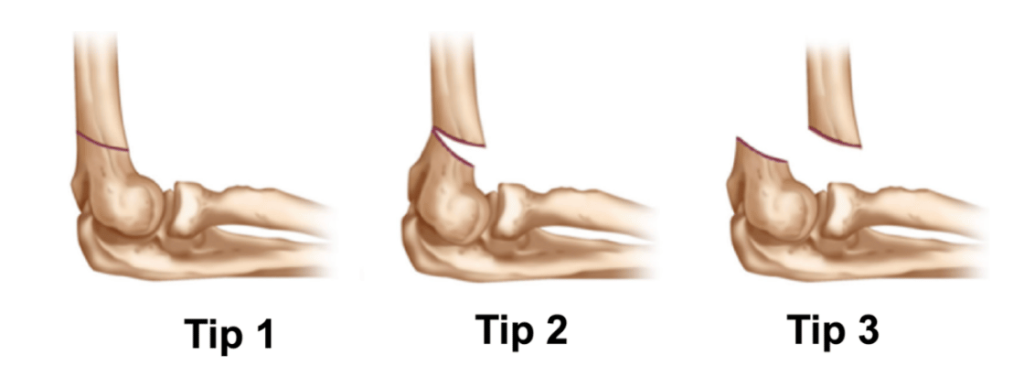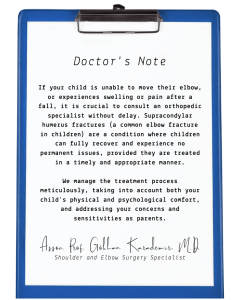Supracondylar humerus fractures are among the most common elbow fractures seen in childhood. They typically occur in children aged 5–10 and are most often caused by falling onto an outstretched arm. These fractures happen in the part of the upper arm bone (humerus) closest to the elbow, near the growth plate. Because they are located around the joint, they must be managed carefully.

The treatment approach varies depending on the type of fracture and the amount of displacement (how far the bone pieces have moved). Fractures that are non-displaced or minimally displaced can be treated successfully with a cast, while displaced or angulated fractures may require surgical intervention. Surgery involves realigning the broken bone ends and securing them with small wire systems (K-wires).
If not treated correctly, these fractures can lead to deformity in the elbow’s angle, limited range of motion, or damage to nerves and blood vessels. Fortunately, with timely and appropriate intervention, children can overwhelmingly recover completely without any long-term complications (sequelae).

Duration of Surgery: Approximately 30–60 minutes
Type of Anesthesia: General anesthesia. (A method using a mask, known as an LMA, is typically sufficient, avoiding the need for intubation—placing a breathing tube down the throat.)
Surgical Method: Closed reduction (realigning the bone ends without a large incision) and K-wire fixation. A skin incision is generally not required.
First day: 3–4
First week: 2–3
After 2 weeks: 0–1
Discharge is planned for the next day.
First 3–4 weeks: Immobilization (no movement) with an elbow splint or cast
4th week: K-wires are removed (in the office or with brief anesthesia)
5th–6th week: Elbow motion begins
8th week: Return to daily life and non-sport activities
3rd month: Cleared to return to strenuous activities, like sports
As there is usually no skin incision, special wound dressing is not required
The pin entry sites must be kept dry and clean
No. Supracondylar fractures generally do not affect the growth plate. With correct treatment, normal growth continues.
Yes, the K-wires are removed after 3–4 weeks, once the fracture has healed. This procedure is usually done quickly and painlessly.
An average of 3–4 weeks. It is removed once healing is confirmed.
Light exercises may be recommended, but most children regain their full range of motion quickly without additional therapy.
No, a properly healed bone is more resistant to re-fracture. However, overly strenuous activities should be avoided for the first 6 months.